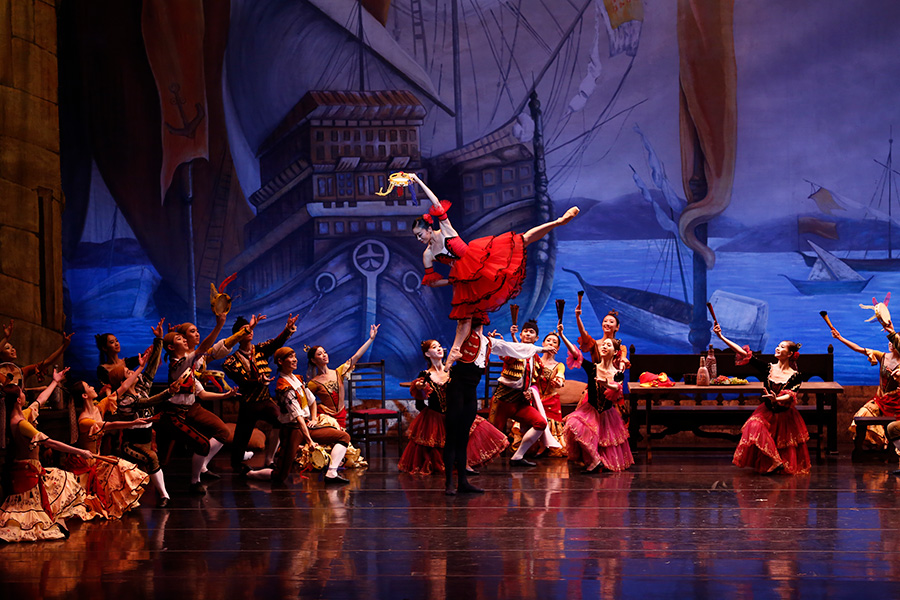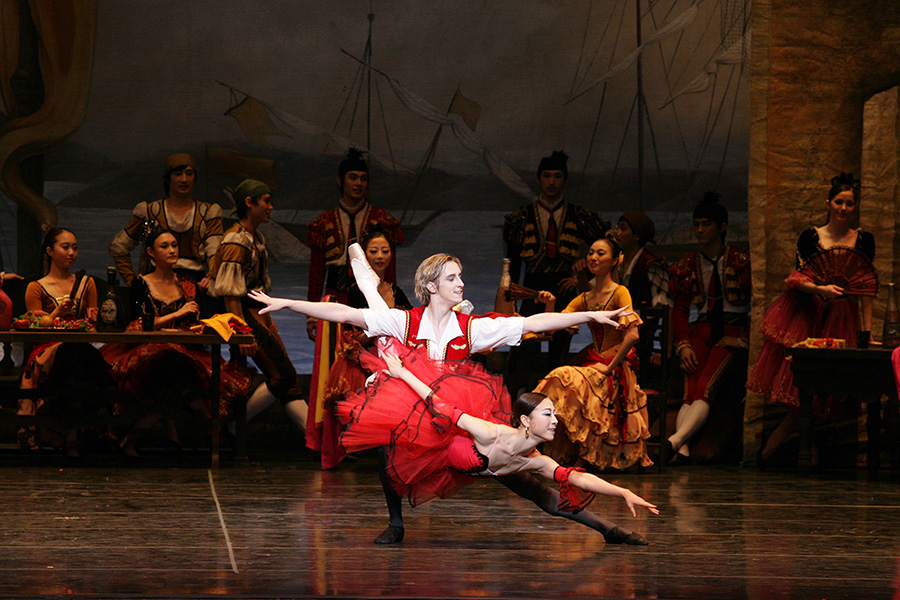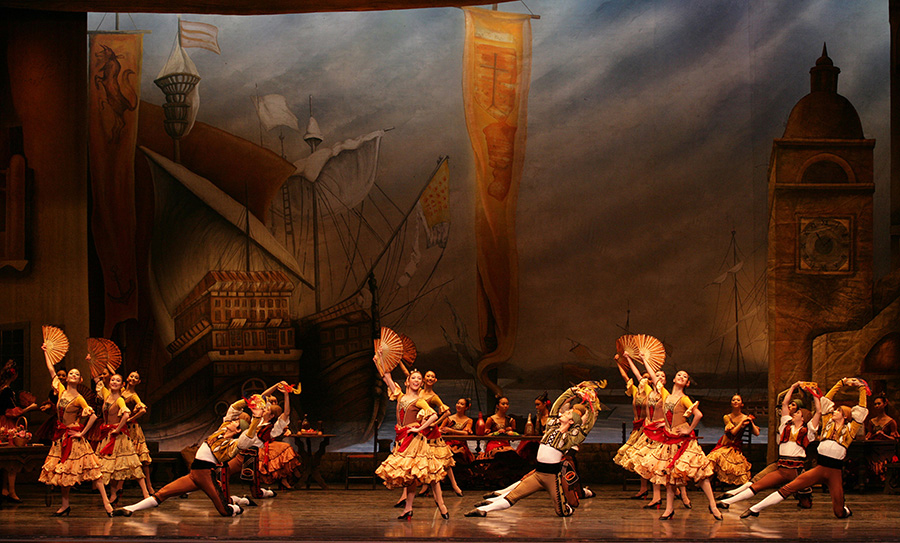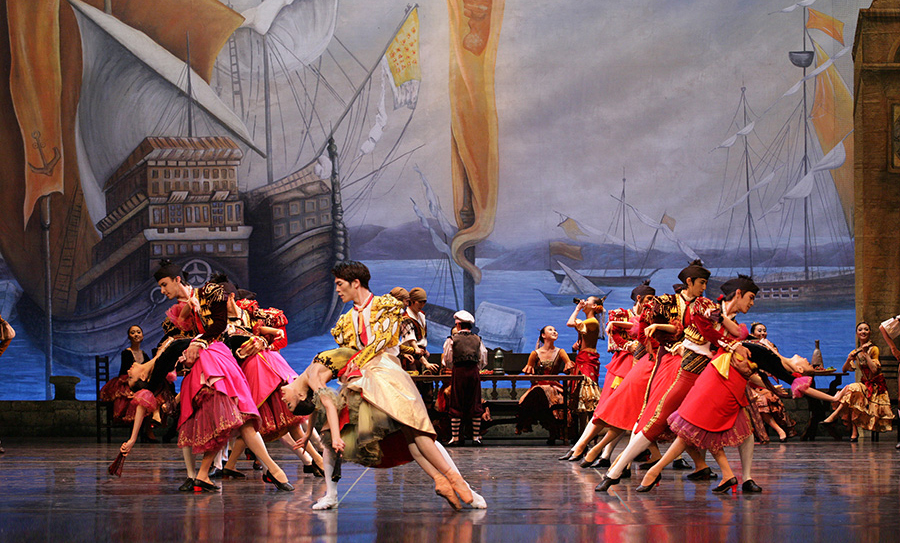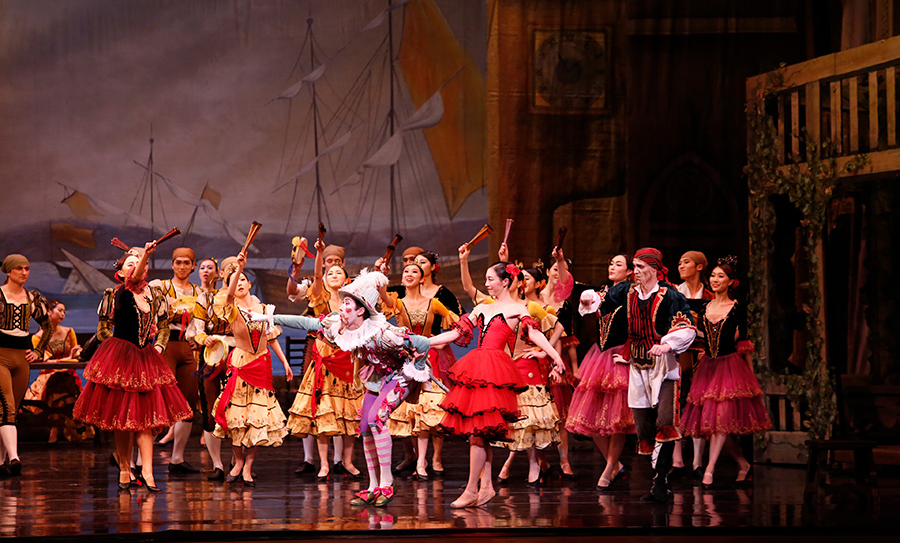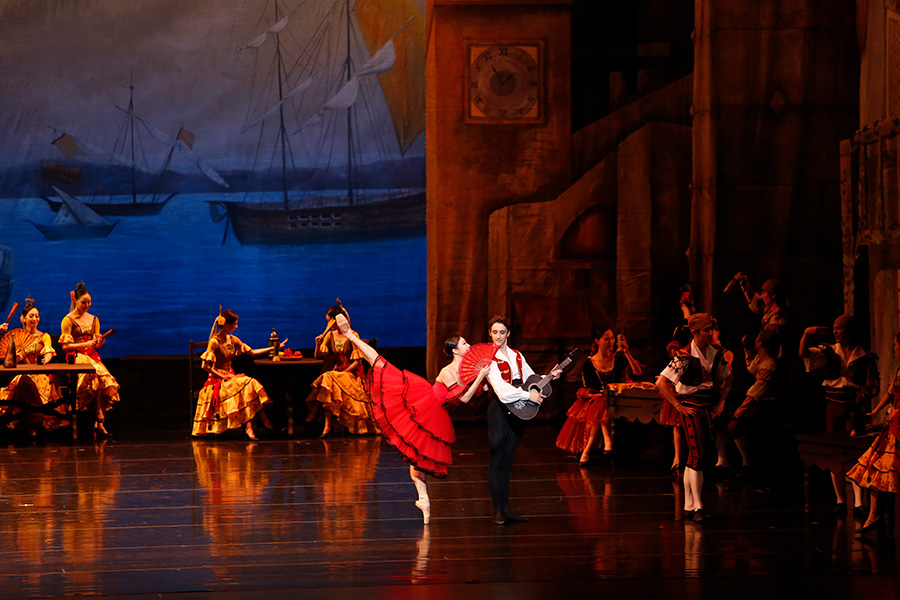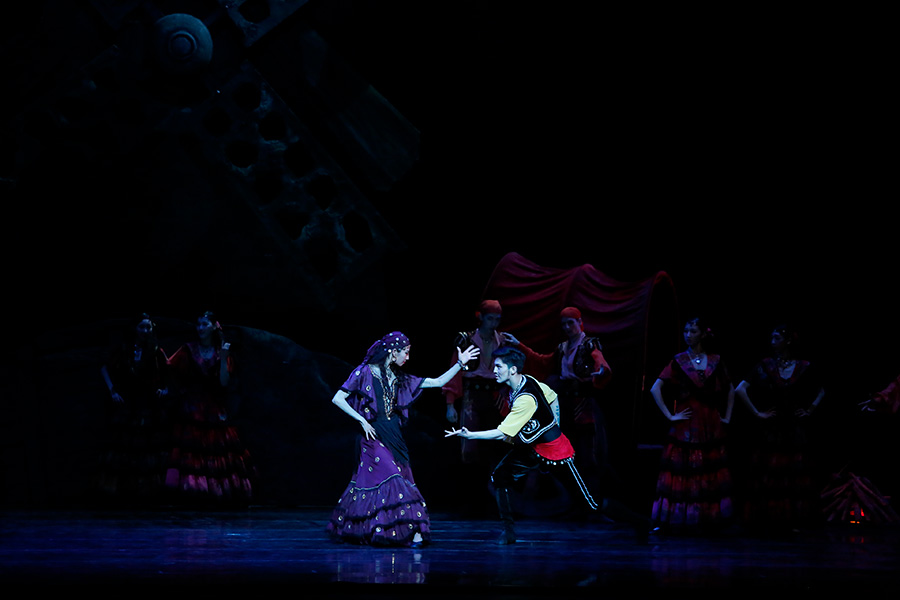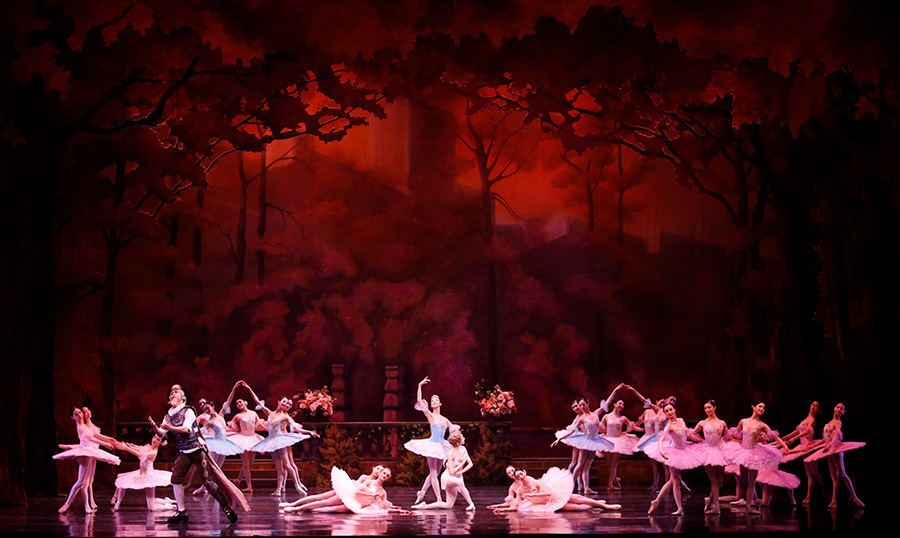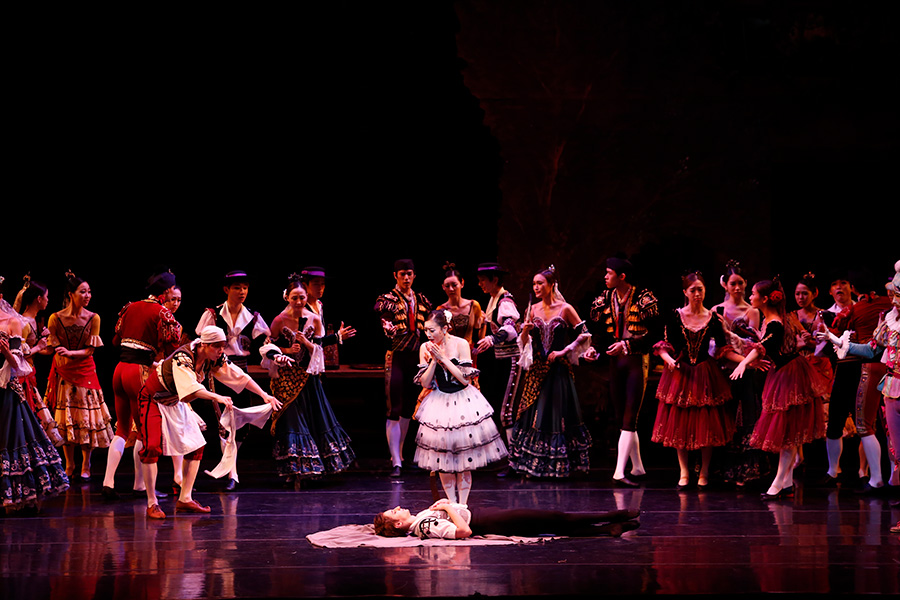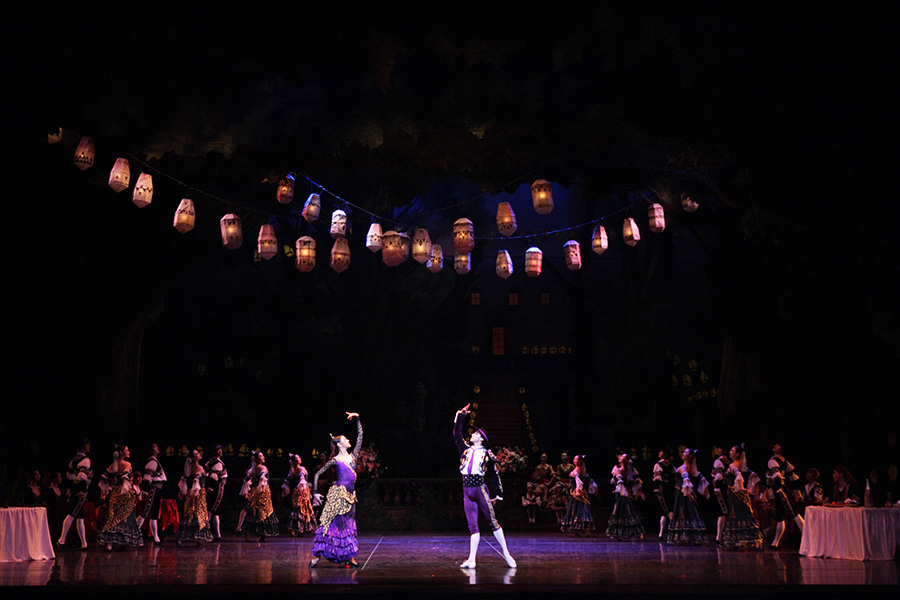Don Quixote
| World Premiere | Bolshoi Ballet at The Bolshoi Theater, Russia, 1869 |
|---|---|
| Universal Ballet Premiere | The Opera Theater, Seoul Arts Center on March 27, 1997 |
| Choreography | Alexander Gorsky Rostislav Zakharov after Marius Petipa |
| Additional Choreography | Oleg Vinogradov |
| Music | Ludwig Minkus |
| Set Design | Alexei Popov |
| Costume Design | Vecheslav Okunev |
| Lighting Design | Nakchoen Kang |
| Composition | 7 scenes and 3 acts |
| Running Time | 2 hours 25 minutes |
Don Quixote - classical ballet with wit and humor
Among all the full-length ballet classics of the 19th century, Don Quixote is known for its fun-loving scenes, its heart-warming story, and its energetic dancing. Full of Spanish passion and panache, the story is full of interesting twists and turns. The entrance of the toreadors and the spirited seguidilla danced by the local villagers charm and excite the audience. Universal Ballet’s Don Quixote was chosen ‘best dance production of the year’ when it premiered in 1997, and since then it has been the delight of audiences not only in Korea, but also in England and Hungary, where it received very favorable receptions.
A very Korean story in a very Western art formsome of classical ballet’s best-loved moments
The best known section of Don Quixote is the grand pas de deux in the final act. Crafted in the standard structure, it contains a lyrical duet, an energetic solo for Basil, a more delicate solo for Kitri and a bravura coda that brings fireworks from both of them. Performed more than any other in the entire classical repertory, this wedding pas de deux of Kitri and Basil is a bravura celebration of love and Spanish flair.
Requiring brilliant technique and passionate expression by both the ballerina and her partner, Kitri’s 32 fouettes and the energetic leaps in the coda, made famous by artists such as Rudolf Nureyev and Mikhail Barysnikov, make this pas de deux a real crowd pleaser. The fantasy world in Act 2 where Don Quixote meets the Dulcenea of his dreams, along with charming Cupid and the beautiful and graceful Queen of the Dryads, is depicted in spell-binding harmony by the entire corps of company ladies. Universal Ballet’s men shine in the energetic toreador dances and the passionate gypsy dance. Thus, the production shows the entire cast at its best, making Don Quixote a performance you should not miss.
Brilliant ballet technique mingled with exciting music by Ludwig Minkus
Interesting incidents in the story line as well as Spanish glamour make this ballet fun to watch. Not many full length comedies appear in the world’s classical ballet repertory. For example, Don Quixote provides a striking contrast to that staple of classical dramatic ballet, Swan Lake. The lighthearted delightful character of Minkus’ music comes alive on stage to make this a ballet even newcomers to ballet can understand and enjoy.
